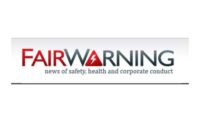An Aon eSolutions article by Steve Hirsch
Executive Summary: In many organizations, risk management receives most of the focus and resources; safety management, meanwhile, is often perceived as less important.As a result, it is difficult for organizations to realize the human capital, financial, and productivity benefits of an integrated approach to risk management and safety management. Although such integration is still rather rare, when safety has an equal seat at the risk management table, the business value can be substantial.
Introduction
As organizations grow their business, and in some cases become global players, risk factors and cost of risk can increase and become even more complex. This is particularly true as companies fail to take new organizational approaches in this post-recession environment. One issue that adds to such complexities is the problem of organizations that continue to operate risk management and safety management as separate disciplines. In many, if not most, organizations, risk management receives most of the focus and resources; safety management, meanwhile, is often the corporate equivalent of a necessary evil, and is perceived as less important in the critical path.
None of this is to say that companies don’t place an emphasis on safety, even in the arena of risk management. Indeed, findings in the Aon Global Risk Technology Survey (2009) showed that improving safety within the organization was one of the top four drivers to focus on.
Yet, the reality is that although organizations often claim they place risk management and safety on an equal footing, they rarely demonstrate it from the perspective of resource allocation. In fact, safety often does not receive the resources it needs to meet basic regulatory compliance. Whether consciously or not, risk management and safety teams often seem to operate on separate and competing paths from a process and resource allocation perspective. To make matters worse, companies that transfer their risk often believe they need to do little in the way of risk control and safety because they feel that they are already covered. Unfortunately, that view leads to more frequent claims, more severe claims, higher premiums and potentially less coverage down the road. As a result, it becomes increasingly difficult for organizations to realize the human capital, financial, and productivity benefits of an integrated and comprehensive approach.
Without a proactive and integrated approach to managing total cost of risk, organizations can experience immeasurable effects to their business. In some cases, such effects can be hard to overcome, and some businesses never do. “An ounce of prevention is a worth a pound of cure” is an old saying, but one that holds true in a safety/risk control environment. Although such integration is still rather rare, when safety has an equal seat at the risk management table, notable results are being produced.
Making the case for integration of risk management and safety
A department’s ability to demonstrate value and results is more critical than ever. To that end, safety should not be viewed merely as an obligation; to the contrary, it can deliver significant quantifiable as well as intangible (in terms of reputation and employee morale) value to an organization. In fact, process safety management should be seamlessly integrated into all aspects of the business, incorporating a common approach thereby eliminating gaps between functional groups. This way safety becomes a facet of every job and business decision across the enterprise. There are many interdependent components that make up a comprehensive safety management program. In terms of being able to provide value to the needs of risk management on a daily basis, organizations need a process and platform to pro-actively and quickly:
- Identify the current and future risk & “safety” exposures that exist.
- Communicate the exposures to the appropriate people and stakeholders.
- Enforce and execute compliance and best practice procedures to mitigate the identified exposure(s).
- Evaluate the timeliness and effectiveness of the enforcement procedure.
- Educate the organization on how to prevent the exposure from reoccurring.
So what are the benefits of optimizing the risk management-safety partnership?
- Positive ROI, reduced TCOR. It is estimated that identification and correction of a hazard before an accident occurs can reduce the costs associated with that hazard by 50 percent or more. In a recent study, hazard prevention and control was determined to provide the best cost-to-benefit ratio for safety program activities. The key to prevention and control is the ability to track all efforts in order to correct identified hazards. Every company’s goal when it comes to managing EH&S is to prevent “non-performance” from becoming the operational standard. If that can be prevented with a solid EH&S strategy, companies will begin to see a decrease in its total cost of risk.
- Reduction in claims, costs and risk. Organizations that place an emphasis on safety data management see the benefits of having processes in place to proactively identify leading indicator exposures before injury and illnesses can occur. Having the ability to take that data and compare it to historical claims data down to the property or employee level will enhance predictability models for mitigating future occurrences. This will help to continuously drive productivity and profits for the organization.
- Increase visibility and transparency. Corporate governance can be impacted when safety acts operationally independent and is treated as a separate discipline from risk management. The lack of a standardized process and supporting technology platform can be extremely inefficient and costly for limited EH&S staff charged with maintaining company and regulatory compliance on an enterprise basis.
- Streamlined tracking of values and processes. Despite all of the regulatory compliance standards in place for injury and illness prevention, too many organizations today still do not have a standardized strategy to manage the business process around day-to-day safety activities and operational exposures. By placing safety at the forefront in tracking values and processes, the underwriting process and risk management results can be more positively affected. For this purpose, companies should invest as much time and monetary resources in the safety component as in any other piece of an overall risk management strategy.
- Reduced employment liability. Simply meeting regulatory compliance is not enough. Employers need to go beyond compliance to help ensure the safety of their employees and customers, as well as the quality of products and services they provide to the marketplace. With employment liability claims and litigation costs seeming to be on the rise, it’s more important than ever for employers to ensure and demonstrate that they have their ducks in order with regards to company and regulatory compliance.
- Enhancement of the company’s brand. Organizations that claim that safety is a high priority for the sake of good public relations, but don’t follow through in practice, make a huge and unquantifiable mistake. If a preventable severe or catastrophic event occurs, the perceived benefit such organizations believe they receive from making such claims will be lost. Whether an organization falls into a low risk “service” industry or is a “high” risk manufacturer, people will be wary of conducting business with a company that cannot protect their workers and provide safe products and services.
Final thoughts
While it seems clear that organizations can benefit in many areas from the partnership of risk management and safety, questions may arise as to how best to implement the partnership.
As risk management systems become more prevalent in organizations, the use of customizable safety and risk control software tools are also adding value to companies’ risk data strategy. Organizations can implement automated processes that can cost effectively standardize risk control and safety data on an enterprise basis. This can include the tracking, managing, and rollup reporting of exposure data from claims, audits, self inspections, recommendations, safety meetings, accident investigations, litigation, employee training, incident/injury recordkeeping, material safety data sheets, chemical inventory, and more.
As risk control budgets and resources continue to shrink for many organizations, capital appropriation for investment in technology solutions for maintaining company and regulatory compliance needs to increase. While typically viewed as an “operational expense’, investment in technology is really a function of expense reduction. Organizations – especially those that play in the old economy – need to focus more on strategically creating cost of risk efficiencies and less on head count reduction to save money. The good news is that capital expenditures seem to be trending up; however, technology alone is not the answer. Organizations that invest in technology solutions should also have a comprehensive and compliance-driven process in place to recognize the benefits of automation and a return on their investment. Additionally, it is imperative that organizations also drive value, quality, and a standard of excellence down to every employee to efficiently align the integration of people, process, and platforms to achieve its organizational goals.
About Aon eSolutions
Aon eSolutions is the technology solutions business of Aon Corporation (NYSE: AON) and provides award-winning technology-based tools that improve the management of risk, insurance and safety programs. These personalized and configurable best-in-class systems — AonLine, iVOS, RiskConsole and SafetyLogic — each provide measurable value by aggregating data, streamlining business processes and optimizing resources. Visit www.aon-esolutions.com for more information.
About Aon
Aon Corporation (NYSE:AON) is the leading global provider of risk management services, insurance and reinsurance brokerage, and human resources solutions and outsourcing. Through its more than 60,000 colleagues worldwide, Aon unites to deliver distinctive client value via innovative and effective risk management and workforce productivity solutions. Aon's industry-leading global resources and technical expertise are delivered locally in over 120 countries. Named the world's best broker by Euromoney magazine's 2008, 2009 and 2010 Insurance Survey, Aon also ranked highest on Business Insurance's listing of the world's insurance brokers based on commercial retail, wholesale, reinsurance and personal lines brokerage revenues in 2008 and 2009. A.M. Best deemed Aon the number one insurance broker based on revenues in 2007, 2008 and 2009, and Aon was voted best insurance intermediary 2007-2010, best reinsurance intermediary 2006-2010, best captives manager 2009-2010, and best employee benefits consulting firm 2007- 2009 by the readers of Business Insurance. Visit www.aon.com for more information on Aon and www.aon.com/manchesterunited to learn about Aon's global partnership and shirt sponsorship with Manchester United.
Steve Hirsch is vice president for Aon eSolutions (www.aon-esolutions.com). Since 1999, Steve has worked with many clients in a multitude of industry sectors to develop environmental, health, and safety technology solutions for company and regulatory compliance.
He can be reached at steve.hirsch@aon.comor at 312.543.6732




